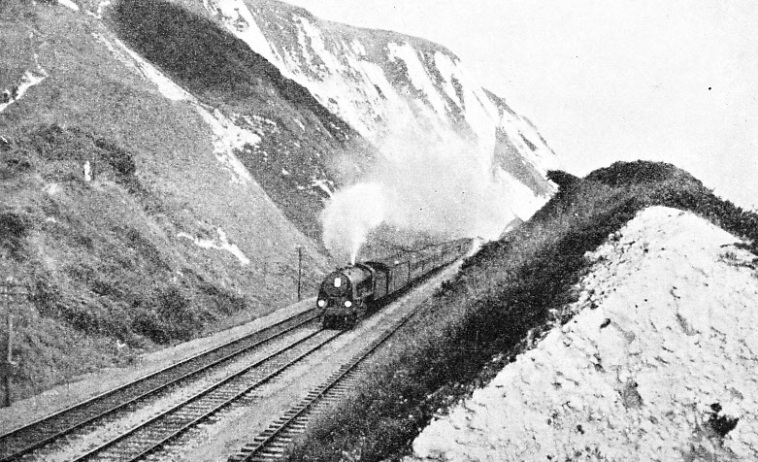

© Wonders of World Engineering 2014-




Part 42
Part 42 of Wonders of World Engineering was published on Tuesday 14th December 1937, price 7d.
Part 42 includes a photogravure supplement showing the construction of the bridges of Stockholm. This section illustrates the article on The Bridges of Stockholm.
The Cover
The cover of this week’s Part shows a stage in the construction of the West Bridge, across Lake Malar, Stockholm. The bridge is described in detail in the chapter entitled The Bridges of Stockholm in this week’s Part.
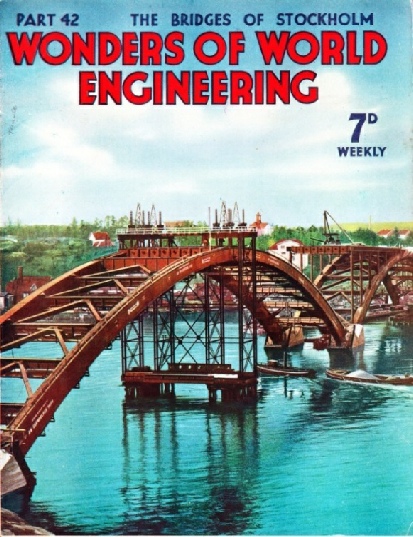
Contents of Part 42
Windmills and Their Story (Part 2)
Marvels of the Microphone
The Bridges of Stockholm
The Bridges of Stockholm (photogravure supplement)
Servomotor Control
Through Cliff and Warren (Part 1)
Windmills and Their Story (Part 2)
The story of the development of the various types of windmill in Great Britain and in the Low Countries, as well as in other parts of the world. This chapter is concluded from part 41.
Marvels of the Microphone
The first practicable microphones appeared in 1878, but it was the invention of radio transmission which did most to stimulate the research that has evolved the amazing instruments so extensively used to-day. This chapter describes the extraordinary advances which have been made since the invention of the microphone. The first practical microphones were the result of the researches of Edison in America and of Professor Hughes in England. It is only comparatively recently, however, that microphones have reached the high standard required by modern radio transmission. This is the sixth article in the series Invention and Development.
Moving-Coil Microphone
MOVING-COIL MICROPHONES are shown in partial section in these two photographs. The fundamental principle of the moving-coil microphone is that the movement of any conductor in a magnetic field causes corresponding voltages to be set up in that conductor. A diaphragm carries an extremely light coil of wire which has a slight clearance between the poles of a permanent magnet. Sounds near the the diaphragm cause air waves to strike it, and to move the coil at corresponding frequencies. The voltages thus set up in the coil vary in proportion to the strength of the air wave.
The Bridges of Stockholm
Photogravure Supplement - 2
THE CONCRETE PILLARS of the Traneberg Bridge were poured by means of a cableway over the completed twin arches. The cableway, supported between two steel pylons 190 feet above the water, had a span of 991 feet. The decks of the bridge are supported on either side of the crown by concrete pillars resting on the reinforced concrete arches.
Cross-in-Hand Mill, Sussex
THE AUTOMATIC FANTAIL, introduced by Andrew Meikle in 1750, is a small windmill set at right angles to the plane of the sails. When the sails are square in the wind’s eye, the vanes of the fantail, presenting only an edge to the wind, remain stationary. When the wind veers, it turns the vanes of the fantail, which, being connected to the cap by gearing, automatically turns the sails into the wind again. The photograph is of Cross-in-Hand Mill , Sussex, the fantail being conspicuous.
Servomotor Control
The automatic control of either of mechanical operations such as the starting of ships or aircraft, or of plant such as boiler installation or a battery of air compressors, can be carried out by servomotors, whose functions duplicate those of human controllers but eliminate the human element. The control of machinery can be carried out automatically, without the aid of the human brain. The functions of the human brain, of muscles and of nerves can be reproduced by mechanical means. A complete boiler installation can be controlled without human attention. As the demand for steam fluctuates, so more or less fuel must be applied to the furnaces, and the air supply must be altered. These operations, normally carried out by the fireman, can be done entirely by automatic means. This is done by a system of what are known as servomotors. The function of the human brain is performed by a delicate master controller, which receives impressions and transmits them through relay circuits (corresponding to the human nerves) to the servomotors which carry out the work of the human muscles.
Servomotors of various kinds and in various applications form the subject of this chapter. He describes the automatic control of a boiler installation, and of pumping stations and other plant. Servomotors have proved specially useful in ships and in aircraft. One form of ship stabilizing equipment is automatically controlled by servomotor equipment.
The Bridges of Stockholm
Photogravure Supplement - 3
SIMPLICITY AND STRENGTH are the keynotes in the design of the Vasterbro, or West Bridge, which spans Lake Malar between Kungsholm and Langholm. The piers are arranged in three pairs, one at either shore and one in the middle of the channel. The piers are of reinforced concrete and steel arch members rest on them. The deck is supported by vertical steel columns rising from the arch members.
The Bridges of Stockholm
The capital of Sweden is situated on an archipelago, and in recent years many fine bridges, in steel and reinforced concrete, have been thrown across the great waterways which interrupt the normal passage of road and rail transport. Many of these structures are remarkable for their simple beauty: their beauty is derived mainly from their simplicity. One of the most remarkable of Stockholm’s bridges is the Vasterbro, or West Bridge, nearly 2,000 feet long. It has six piers of reinforced concrete, one pair being in the centre of the channel, and the other pairs on the facing shores. Two pairs of arches connect the piers, each arch being composed of girder sections, cross-braced with K-shaped diagonals. Stockholm has handled its road traffic problems in no half-hearted or sporadic manner. New highways have been developed in conjunction with the new bridges and traffic planning on a large scale has taken place in recent years. It is not surprising that Stockholm should be visited every year by students of traffic problems from all over the world. Some of the road junctions and intersections in the city have been rebuilt with a system of flying junctions which are reminiscent of the intersections on the German Autobahnen system. The work of building these fine modern bridges is described in this chapter. With its splendid photogravure section, this chapter forms a notable addition to the series entitled “Linking the World’s Highways”.
The Traneberg Bridge
THE REINFORCED CONCRETE ARCH of the Traneberg Bridge was, at the time of its completion (1934), the longest concrete span in the world. The span is 580 ft 6 in. The bridge, which consists of two decks, side by side, spans Traneberg Sound and links the island suburb of Kungsholm with Brommalandet, another Stockholm suburb.
The Bridges of Stockholm
Photogravure Supplement
CLEVER REBUILDING WORK has been carried out in connexion with the St Erik Bridge, originally built in 1906. The foundations of the piers needed only grouting. The new and widened steel superstructure is made up of six continuous plate girders placed below the deck. The superstructure is carried by concrete pillars poured round the old latticework supports, with strongly reinforced brackets to carry the main girders of the widened superstructure. In the centre of the piers, below the superstructure, gaps have been provided for the installation of a subway.
An Automatic Pumping Station
AUTOMATIC PUMPING STATION used for pumping the water from the drainage sump beneath the Mersey Tunnel, described in the chapter which begins on page 39. Situated beneath the river, the pumps are automatically started or stopped by the electrical control system - shown in part on the right - according to the variations in the load.
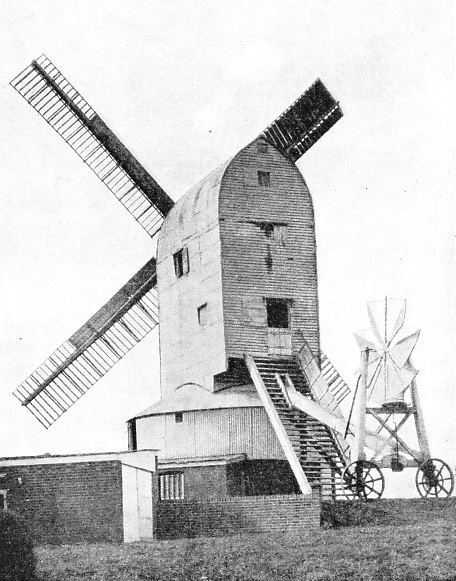
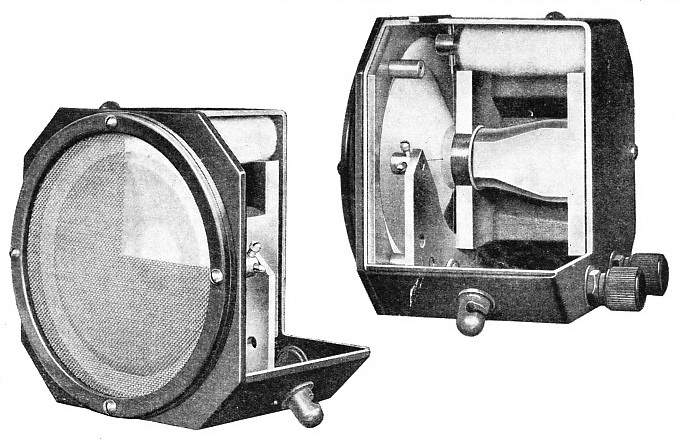
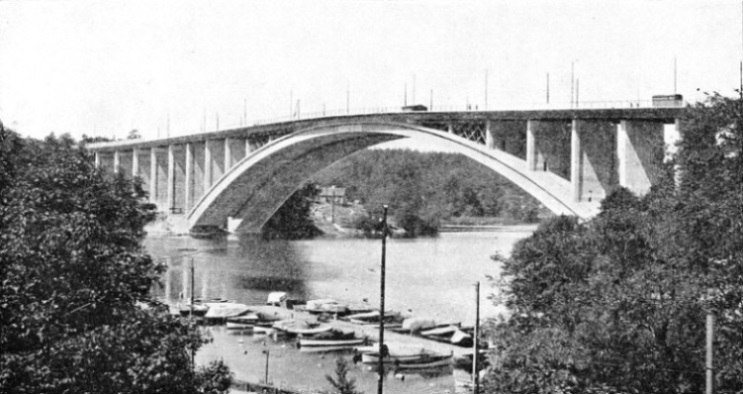

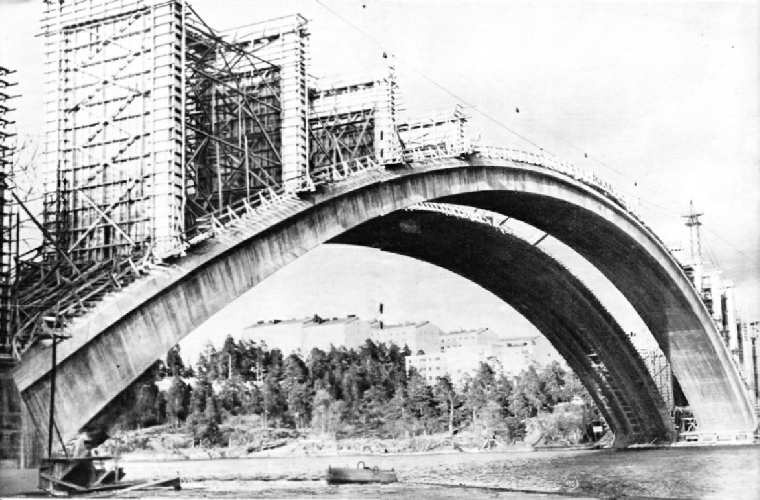
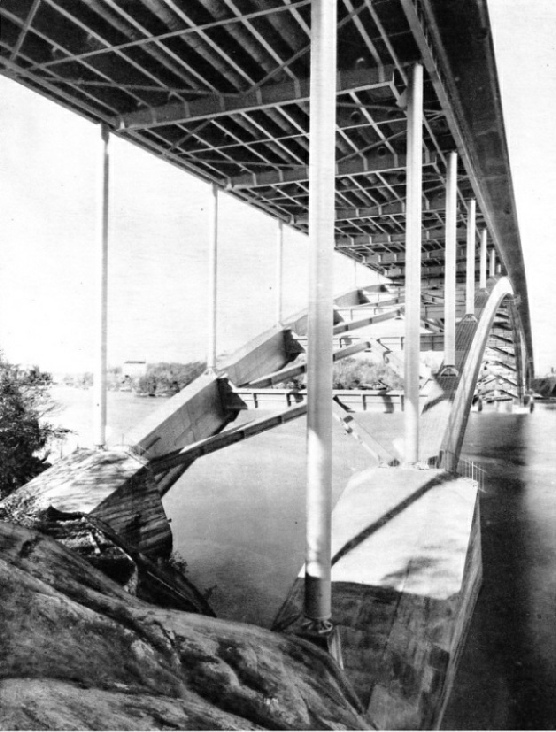
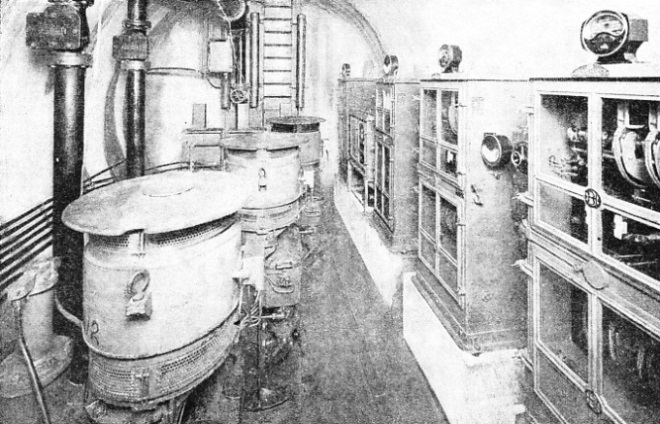
Through Cliff and Warren (Part 1)
Between Folkestone and Dover, in Kent, thee are six miles of crumbling chalk cliffs and a treacherous region, known as the Warren, liable to frequent slips and subsidences. Many times Nature has attempted to wreck the railway which engineers have laid and maintained in these difficult conditions. A remarkable feat of railway engineering during the nineteenth century was the building of the line between Folkestone and Dover, in Kent. The route lies along the famous chalk cliffs and through the area of crumbled cliff known as the Warren. The line was completed in 1844 and several subsidences have taken place from time to time. The most serious of these subsidences occurred during the war of 1914-18 and destroyed a considerable section of that particularly important line. In due course, however, the line was repaired and the damage inflicted by Nature was made good. The building of this railway is described in this chapter. The article is the seventh in the series on Railway Engineers at Work and is concluded in part 43.
